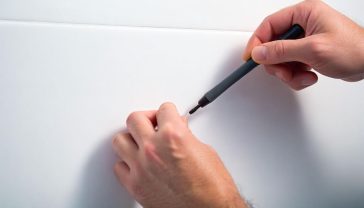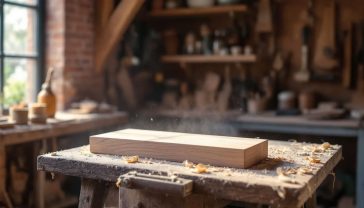The Guide to Cleaning Your Leather Sofa: A British Homeowner’s Handbook
Your complete guide to keeping a leather sofa looking its best. From routine cleans to emergency stain removal, we have the tips for every British home.

This post may contain affiliate links. If you make a purchase through these links, we may earn a commission at no additional cost to you.
There’s nothing quite like sinking into a leather sofa after a long day. It’s a proper centrepiece to any British living room, isn’t it? Cool in the summer, cosy in the winter, and it gets better with age – a bit like a good cheddar. But then life happens. A stray blob of ketchup from a bacon butty, a leaky pen, or just the everyday grime that builds up. Suddenly, that beautiful piece of furniture looks a bit sorry for itself.
Panic sets in. Do you reach for the nearest spray bottle and hope for the best? Absolutely not. Cleaning leather isn’t like wiping down the kitchen counter. Different types of leather need different care, and using the wrong stuff can turn a simple spot clean into a disaster.
But don’t you worry. We’re here to demystify the whole process. Think of this as your definitive guide to keeping your leather sofa looking its best, from a quick dust-down to tackling those “oh-no” moments. We’ll cover everything you need to know, whether your sofa is a sleek modern number or a classic Chesterfield that’s been in the family for years. Let’s get that sofa looking so good, you’ll want to have the neighbours round for a cuppa just to show it off.
First Things First: Do You Actually Know Your Leather?
Before you even think about cleaning, you need to figure out what kind of leather you’re dealing with. It’s a bit like knowing whether your shirt is cotton or silk before you chuck it in the wash. Using a cleaner meant for a tough, coated leather on a soft, natural one could strip its colour and leave it feeling dry and horrible.
Most sofas sold in the UK fall into one of these categories. Here’s how to tell them apart.
The Great Leather Sofa ID Parade
1. Protected or Pigmented Leather
This is the most common type you’ll find in family homes, and for good reason. It’s the hardiest of the bunch.
- What it is: The surface has been coated with a polymer topcoat containing pigments (that’s the colour). This acts like a tough, protective barrier.
- How it looks and feels: It has a uniform, consistent colour and a slight sheen. The surface feels smooth and a little plasticky. If you look closely, the natural grain pattern might look a bit too perfect, as it’s often embossed onto the surface.
- The Spill Test: Drop a single droplet of clean water onto an hidden spot (like the back or under a cushion). If it beads up and sits on the surface without sinking in, you’ve almost certainly got protected leather.
- Why it’s great: It’s brilliant for homes with kids, pets, or clumsy adults. It resists stains, scratches, and fading from sunlight far better than other types.
2. Aniline and Semi-Aniline Leather
These are the premium options. They look and feel luxurious, but they need a bit more TLC.
- What it is:
- Full Aniline: This is the most natural-looking leather. It’s been dyed in a vat with soluble dyes but has no protective topcoat. It’s like wood with only a light stain – all the natural beauty shows through.
- Semi-Aniline: This is a happy medium. It’s been dyed like aniline leather but has a very thin protective layer. This layer gives it a bit more durability while keeping most of that lovely soft feel.
- How it looks and feels: Aniline leather is incredibly soft and warm to the touch. You can see all the natural markings of the hide – think scars, pores, and different shades. The colour isn’t perfectly uniform. Semi-aniline feels similar but might have a slightly more consistent colour and a very faint sheen.
- The Spill Test: That drop of water will sink in pretty quickly on full-aniline leather, leaving a dark patch (don’t worry, it’ll dry). On semi-aniline, it might sit there for a short moment before slowly being absorbed.
- Why it’s lovely (but high-maintenance): It’s breathable and develops a beautiful patina over time. However, it’s very absorbent and will stain easily. It’s not the best choice if you’re planning on eating your dinner on it every night.
3. Nubuck or Sueded Leather
This is the really velvety stuff. It’s beautiful but is the most delicate of all.
- What it is: The top grain of the leather has been buffed or sanded to create a soft, velvety nap. It’s similar to suede, but suede is made from the inner split of the hide, making it less durable.
- How it looks and feels: It has a texture like velvet or a peach. It doesn’t have any shine and feels incredibly soft.
- The Spill Test: Water will sink in immediately and leave a dark mark.
- Why it’s a statement piece: It looks stunning, but it’s a magnet for dirt and stains. You need special brushes and cleaners for this type, and you have to be very careful. Honestly, it’s not for the faint of heart.
Can’t find a label? Check the manufacturer’s website or the receipt from where you bought it. If you’re still stumped, assume it’s a delicate type like aniline and test your cleaning products on a very hidden area first.
The Essential Toolkit: Your Sofa Cleaning Arsenal
You don’t need a lorry-load of fancy gear, but having the right tools makes the job much easier and safer for your sofa.
- Soft Microfibre Cloths: Get a good stash of these. You’ll need at least three or four – one for dusting, one for cleaning, and one for buffing. They’re gentle and don’t leave lint behind.
- A Vacuum Cleaner with a Soft Brush Attachment: This is non-negotiable for getting rid of crumbs and dust without scratching the leather.
- A Leather Cleaner: Crucially, buy a cleaner that is specifically designed for your type of leather. A good quality, pH-neutral cleaner is a must. You can find these at furniture shops, some larger supermarkets, or online. Avoid all-purpose sprays, washing-up liquid, or anything containing solvents or ammonia – they will wreck your leather over time.
- A Leather Conditioner: This is like moisturiser for your sofa. It keeps the leather soft, supple, and stops it from cracking. Again, match it to your leather type.
- Distilled Water: Why distilled? Tap water in many parts of the UK is hard, meaning it contains minerals that can leave white spots or streaks on your leather as it dries. A big bottle from the supermarket is only a quid or two and is a worthwhile investment.
- A couple of small bowls: For mixing your cleaning solution.
- (For Nubuck) A Suede/Nubuck Brush: This has soft bristles to lift the nap and get rid of dirt without damaging the surface.
The Routine Clean: Your Weekly and Monthly MOT
Just like anything else in your house, your sofa needs a bit of regular attention to stay looking sharp. This isn’t a deep clean; it’s the simple maintenance that stops dirt from building up in the first place.
The Weekly Wipe-Down (Takes 5 minutes)
- Get the Bits Off: First, take off all the cushions. Give them a good shake. You’ll be amazed at what falls out.
- Vacuum Thoroughly: Using your soft brush attachment, vacuum the entire sofa. Get right into the crevices and seams where crumbs and dust love to hide. Don’t forget the frame underneath the cushions.
- Dust It Down: Take a clean, dry microfibre cloth and give the whole sofa a good wipe-down. This removes the fine layer of dust that can get ground into the surface.
That’s it. Do this once a week, maybe when you’re doing your regular Saturday morning clean, and you’re already halfway to a sofa that lasts a lifetime.
The Monthly Refresh (Takes 15-20 minutes)
Once a month, or every couple of months if your sofa doesn’t see much action, it’s time for a slightly deeper clean.
- Do the Weekly Steps: Start with a thorough vacuum and dust.
- Prep Your Cleaning Solution: If you’re using a commercial leather cleaner, follow the instructions on the bottle. If you’re making a simple DIY solution for protected leather only, mix a few drops of a very mild, moisturising soap (like Dove) or a specific leather soap into a bowl of distilled water. Another option is a 50/50 mix of distilled water and white vinegar, which is great for gentle cleaning.
- The Damp Cloth Method: Take one of your microfibre cloths and dip it into your cleaning solution. Now, wring it out until it is almost dry. You want it damp, not wet. The last thing you want is to soak your leather.
- Wipe It Down: Working on one section at a time (e.g., one cushion, one armrest), gently wipe the surface. Don’t scrub. A gentle, circular motion is best.
- Rinse (Without Rinsing!): Take a second microfibre cloth, dip it in plain distilled water, and again, wring it out thoroughly. Wipe over the section you’ve just cleaned to remove any soap residue.
- Dry and Buff: Use a third, completely dry microfibre cloth to gently buff the section dry. This prevents water spots and brings up a nice lustre.
- Repeat: Continue this section by section until you’ve done the whole sofa. Working in small areas stops the cleaning solution from drying on the surface before you’ve had a chance to wipe it off.
A Word of Warning: For aniline or nubuck leather, avoid water-based solutions unless you’re using a specific foam cleaner designed for them. A dry microfibre cloth and a regular vacuum are your best friends for routine cleaning.
Tackling the Terrors: A Guide to Common Stains
Right, this is the moment we all dread. A spillage. The key is to act fast. The longer a stain sits there, the more likely it is to become a permanent resident.
The Golden Rule: Always test any stain removal method on a hidden part of the sofa first!
Grease and Oil Stains (From crisps, pizza, or buttery popcorn)
Grease is a tricky one because it wants to soak right into the leather.
- For Protected Leather: Wipe up any excess grease immediately with a dry cloth. Then, use your regular leather cleaner on the spot. It might take a couple of goes.
- For Aniline/Nubuck Leather: Do not use water. This will just spread the grease. Instead, sprinkle a generous amount of cornflour or talcum powder directly onto the stain. Leave it for a few hours, or even overnight. The powder will draw the grease out of the leather. Then, gently brush it off with a soft brush. You might need to repeat this. For nubuck, use your nubuck brush to restore the nap afterwards.
Ink Stains (From a Biro or a felt-tip)
Ink is the enemy. Quick action is everything.
- For Protected Leather: A cotton bud dipped in rubbing alcohol (isopropyl alcohol) can work wonders. Dab the stain gently – don’t rub, or you’ll spread it. Work from the outside of the stain inwards. The ink should transfer to the cotton bud. Use a fresh bud as soon as it gets dirty. Once the ink is gone, wipe the area with a damp cloth and then dry it. Follow up with some conditioner, as the alcohol can be very drying.
- For Aniline/Nubuck Leather: This is a tough one. A specialist leather ink remover stick is your best bet. Trying DIY methods like alcohol on this type of leather is very risky and can easily remove the dye. If you’re not confident, this is one for the professionals.
Dark Liquid Stains (Red wine, coffee, tea, or juice)
That heart-stopping moment when a glass of Malbec goes flying.
- Blot, Don’t Rub! Immediately grab a dry cloth or some kitchen roll and blot the spill. Absorb as much liquid as you possibly can.
- Wipe Gently: Use your standard cleaning solution (damp cloth method described in the monthly refresh) on the area. For protected leather, this is usually enough to lift what’s left of the stain.
- For Aniline Leather: Blotting is key. If a mark remains after it dries, you can try a cleaner specifically for aniline leather, but be prepared that some marking may remain. It’s part of the character, right?
Unknown Stains and General Grime
For those mystery marks or areas that get a lot of contact, like headrests and armrests, which can darken from the natural oils on our skin and hair.
- For Protected Leather: A 50/50 mix of distilled water and white vinegar is excellent for cutting through this kind of grime. Use the damp cloth method, wiping it on, “rinsing” with another damp cloth, and buffing dry.
- For Aniline Leather: This build-up is harder to remove without damaging the leather. Use a specific aniline cleaner, applied as a foam. This cleans the surface without soaking the leather.
The Finishing Touch: Conditioning Your Sofa
If cleaning is like washing your face, conditioning is like moisturising. You wouldn’t skip it, would you? Leather is a natural material, and over time it can lose its natural oils. This makes it dry, stiff, and prone to cracking, especially if it’s near a radiator or in a sunny spot.
How and When to Condition
- When: You should condition your sofa twice a year. A good time is in the spring and again in the autumn as you turn the central heating on or off. You should also condition it any time you’ve done a significant spot clean, especially if you’ve used anything like alcohol that can dry it out.
- Which Conditioner: Use a good quality leather conditioner that’s right for your sofa type. Avoid anything with silicones or waxes, as they can stop the leather from breathing. A little goes a long way.
- How to Apply:
- Make sure the sofa is clean and completely dry first.
- Put a small blob of conditioner onto a clean microfibre cloth (not directly onto the sofa).
- Apply it to the leather in a gentle, circular motion. Again, work in small sections.
- Leave it to soak in for about 30 minutes to an hour. The leather will drink it up.
- Take another clean, dry cloth and give the whole sofa a final buff. This removes any excess conditioner and brings up a beautiful, rich shine.
Important Note: Do not condition nubuck or sueded leather. It will ruin the velvety nap. For these types, use a specialist nubuck protector spray instead. This will create an invisible barrier to help repel water and stains.
Common Mistakes to Avoid: The Sofa Sin Bin
We’ve all been there, trying a “quick fix” that ends in tears. Here are the things you should never, ever do to your leather sofa.
- Never use baby wipes. They often contain chemicals and moisturisers that aren’t designed for leather and can leave a sticky, dull residue.
- Never use bleach or ammonia-based cleaners. This includes many all-purpose kitchen and bathroom sprays. They are far too harsh and will strip the colour and finish from your leather.
- Never use a steam cleaner. The combination of high heat and excessive moisture is a death sentence for leather. It can cause it to shrink, warp, and become brittle.
- Never soak the leather. Always use a well-wrung-out cloth. Too much water can cause stains to spread and can damage the leather from the inside out.
- Never place your sofa in direct sunlight or right next to a radiator. This will dry out the leather and cause the colour to fade dramatically over time.
When to Call in the Professionals
Sometimes, you have to admit defeat and call for backup. If you’re dealing with a really stubborn stain, widespread discolouration, a tear, or if you simply don’t feel confident tackling it yourself (especially with an expensive aniline or nubuck sofa), it’s time to call a professional leather cleaning specialist.
They have the industrial-strength products, specialist equipment, and, most importantly, the experience to sort out problems you can’t. It might cost a bit, but it’s a lot cheaper than buying a new sofa.
Your leather sofa is an investment. It’s the heart of your living room, the scene of countless movie nights, cosy evenings, and chats with friends. With a little bit of regular care and the right know-how, you can keep it looking fantastic for years to come. So go on, give it the love it deserves.
Further Reading & Resources
For those looking to delve deeper or find specialist products, here are some highly respected UK-based resources:
- Furniture Clinic: A fantastic resource for specialist cleaning and restoration products, with detailed guides and video tutorials. (https://www.furnitureclinic.co.uk/)
- The Leather Repair Company: Another leading UK expert offering a wide range of products for cleaning, repair, and restoration, along with professional advice. (https://www.leatherrepaircompany.com/)
- Good Housekeeping UK: Often features tested advice and product recommendations for cleaning various household items, including leather upholstery. (https://www.goodhousekeeping.com/uk/)






